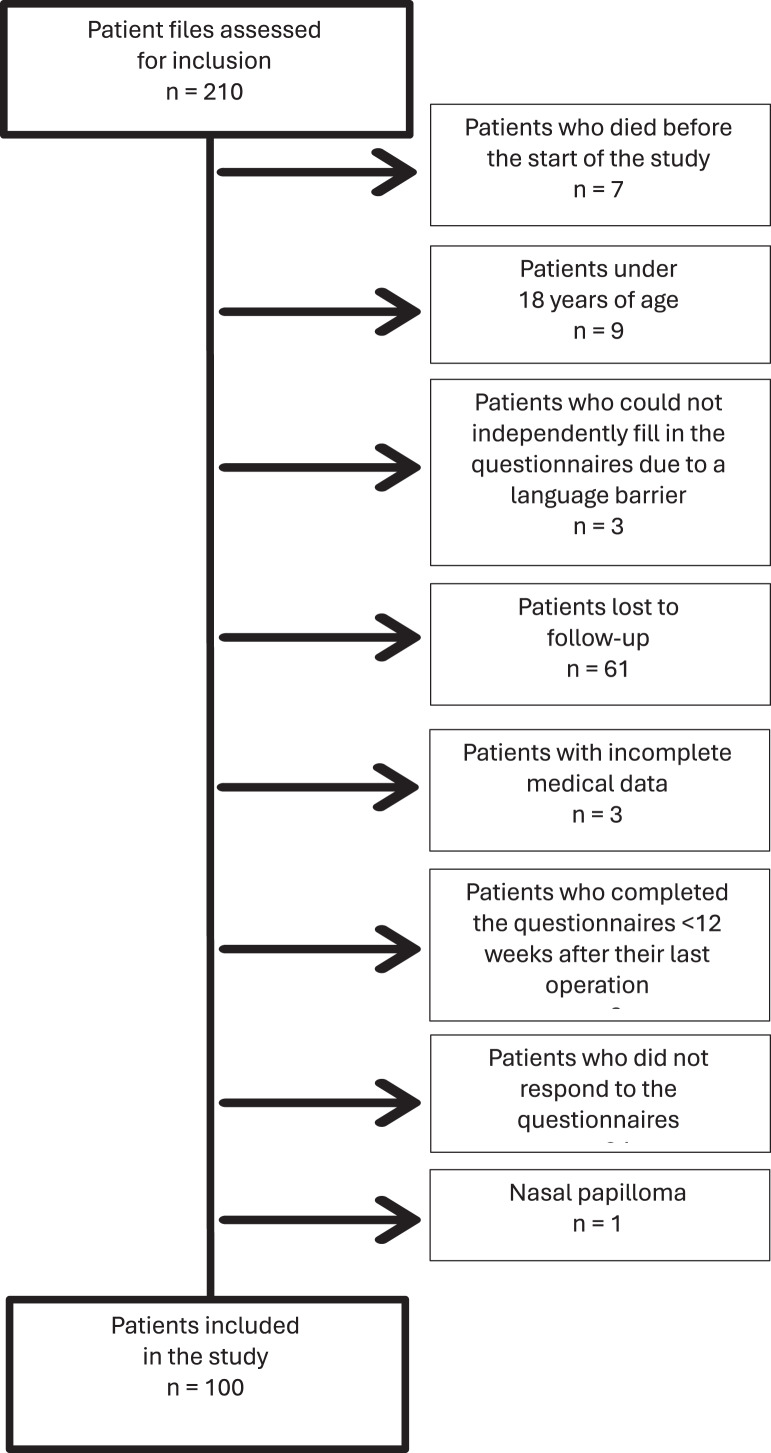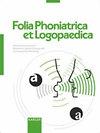下载PDF
{"title":"声带褶皱手术后复发性呼吸道乳头状瘤病患者的生活质量:深入探讨","authors":"Michelle Mallinger, Lynke Wiersma, Bea Spek, Rico N P M Rinkel","doi":"10.1159/000540310","DOIUrl":null,"url":null,"abstract":"<p><strong>Introduction: </strong>This study explores the quality of life among patients with recurrent respiratory papillomatosis (RRP) after vocal fold surgery as measured by the outcome scores of the Voice Handicap Index (VHI) and the Distress Thermometer and Problem List in Patients with Recurrent Respiratory Papillomatosis (DT&PL). Differences in quality of life were explored within the independent variables age, surgical frequency, weeks since last vocal fold operation, gender, HPV type, surgical location, vaccination with Gardasil©, and a patient's request to speak with a speech-language pathologist.</p><p><strong>Methods: </strong>A single-center, observational cohort study was conducted using VHI and DT&PL scores and demographic and clinical data obtained from patient files. Inclusion criteria were a confirmed HPV type, age 18 years or older, the ability to fill in both questionnaires in Dutch, and having undergone at least one surgical procedure to remove laryngeal papilloma. Relationships of the independent variables with VHI and Distress Thermometer (DT) scores were explored using univariable and multivariable regressions and linear regression models.</p><p><strong>Results: </strong>Of 271 RRP patients, 100 met the inclusion criteria and responded to requests to fill in both questionnaires with a minimum of 12 weeks after their last operation. Our study showed a statistically significant negative relationship between age and VHI scores (p = 0.02) in the univariable, and multiple linear regressions (p = 0.01), indicating that patients experienced fewer self-perceived functional voice disabilities with each increase in age. A parallel negative relationship is seen between the variables age (p = 0.03) and DT scores. Our results showed a statistically significant positive relationship between the number of vocal fold surgeries and DT scores (p = 0.03).</p><p><strong>Conclusion: </strong>The results of this study show a significant relationship between age, surgical frequency, and quality of life in patients with RRP. Older patients have lower Voice Handicap Index (VHI) and Distress Thermometer (DT) scores, indicating fewer self-perceived voice and disease-related quality of life problems. Conversely, a rise in surgical frequency is significantly associated with higher DT scores, reflecting greater disease-related distress.</p>","PeriodicalId":12114,"journal":{"name":"Folia Phoniatrica et Logopaedica","volume":" ","pages":"113-122"},"PeriodicalIF":0.7000,"publicationDate":"2025-01-01","publicationTypes":"Journal Article","fieldsOfStudy":null,"isOpenAccess":false,"openAccessPdf":"https://www.ncbi.nlm.nih.gov/pmc/articles/PMC11991680/pdf/","citationCount":"0","resultStr":"{\"title\":\"Quality of Life in Recurrent Respiratory Papillomatosis Patients after Vocal Fold Surgery: An In-Depth Exploration.\",\"authors\":\"Michelle Mallinger, Lynke Wiersma, Bea Spek, Rico N P M Rinkel\",\"doi\":\"10.1159/000540310\",\"DOIUrl\":null,\"url\":null,\"abstract\":\"<p><strong>Introduction: </strong>This study explores the quality of life among patients with recurrent respiratory papillomatosis (RRP) after vocal fold surgery as measured by the outcome scores of the Voice Handicap Index (VHI) and the Distress Thermometer and Problem List in Patients with Recurrent Respiratory Papillomatosis (DT&PL). Differences in quality of life were explored within the independent variables age, surgical frequency, weeks since last vocal fold operation, gender, HPV type, surgical location, vaccination with Gardasil©, and a patient's request to speak with a speech-language pathologist.</p><p><strong>Methods: </strong>A single-center, observational cohort study was conducted using VHI and DT&PL scores and demographic and clinical data obtained from patient files. Inclusion criteria were a confirmed HPV type, age 18 years or older, the ability to fill in both questionnaires in Dutch, and having undergone at least one surgical procedure to remove laryngeal papilloma. Relationships of the independent variables with VHI and Distress Thermometer (DT) scores were explored using univariable and multivariable regressions and linear regression models.</p><p><strong>Results: </strong>Of 271 RRP patients, 100 met the inclusion criteria and responded to requests to fill in both questionnaires with a minimum of 12 weeks after their last operation. Our study showed a statistically significant negative relationship between age and VHI scores (p = 0.02) in the univariable, and multiple linear regressions (p = 0.01), indicating that patients experienced fewer self-perceived functional voice disabilities with each increase in age. A parallel negative relationship is seen between the variables age (p = 0.03) and DT scores. Our results showed a statistically significant positive relationship between the number of vocal fold surgeries and DT scores (p = 0.03).</p><p><strong>Conclusion: </strong>The results of this study show a significant relationship between age, surgical frequency, and quality of life in patients with RRP. Older patients have lower Voice Handicap Index (VHI) and Distress Thermometer (DT) scores, indicating fewer self-perceived voice and disease-related quality of life problems. Conversely, a rise in surgical frequency is significantly associated with higher DT scores, reflecting greater disease-related distress.</p>\",\"PeriodicalId\":12114,\"journal\":{\"name\":\"Folia Phoniatrica et Logopaedica\",\"volume\":\" \",\"pages\":\"113-122\"},\"PeriodicalIF\":0.7000,\"publicationDate\":\"2025-01-01\",\"publicationTypes\":\"Journal Article\",\"fieldsOfStudy\":null,\"isOpenAccess\":false,\"openAccessPdf\":\"https://www.ncbi.nlm.nih.gov/pmc/articles/PMC11991680/pdf/\",\"citationCount\":\"0\",\"resultStr\":null,\"platform\":\"Semanticscholar\",\"paperid\":null,\"PeriodicalName\":\"Folia Phoniatrica et Logopaedica\",\"FirstCategoryId\":\"3\",\"ListUrlMain\":\"https://doi.org/10.1159/000540310\",\"RegionNum\":4,\"RegionCategory\":\"医学\",\"ArticlePicture\":[],\"TitleCN\":null,\"AbstractTextCN\":null,\"PMCID\":null,\"EPubDate\":\"2024/7/22 0:00:00\",\"PubModel\":\"Epub\",\"JCR\":\"Q3\",\"JCRName\":\"AUDIOLOGY & SPEECH-LANGUAGE PATHOLOGY\",\"Score\":null,\"Total\":0}","platform":"Semanticscholar","paperid":null,"PeriodicalName":"Folia Phoniatrica et Logopaedica","FirstCategoryId":"3","ListUrlMain":"https://doi.org/10.1159/000540310","RegionNum":4,"RegionCategory":"医学","ArticlePicture":[],"TitleCN":null,"AbstractTextCN":null,"PMCID":null,"EPubDate":"2024/7/22 0:00:00","PubModel":"Epub","JCR":"Q3","JCRName":"AUDIOLOGY & SPEECH-LANGUAGE PATHOLOGY","Score":null,"Total":0}
引用次数: 0
引用
批量引用
Quality of Life in Recurrent Respiratory Papillomatosis Patients after Vocal Fold Surgery: An In-Depth Exploration.
Introduction: This study explores the quality of life among patients with recurrent respiratory papillomatosis (RRP) after vocal fold surgery as measured by the outcome scores of the Voice Handicap Index (VHI) and the Distress Thermometer and Problem List in Patients with Recurrent Respiratory Papillomatosis (DT&PL). Differences in quality of life were explored within the independent variables age, surgical frequency, weeks since last vocal fold operation, gender, HPV type, surgical location, vaccination with Gardasil©, and a patient's request to speak with a speech-language pathologist.
Methods: A single-center, observational cohort study was conducted using VHI and DT&PL scores and demographic and clinical data obtained from patient files. Inclusion criteria were a confirmed HPV type, age 18 years or older, the ability to fill in both questionnaires in Dutch, and having undergone at least one surgical procedure to remove laryngeal papilloma. Relationships of the independent variables with VHI and Distress Thermometer (DT) scores were explored using univariable and multivariable regressions and linear regression models.
Results: Of 271 RRP patients, 100 met the inclusion criteria and responded to requests to fill in both questionnaires with a minimum of 12 weeks after their last operation. Our study showed a statistically significant negative relationship between age and VHI scores (p = 0.02) in the univariable, and multiple linear regressions (p = 0.01), indicating that patients experienced fewer self-perceived functional voice disabilities with each increase in age. A parallel negative relationship is seen between the variables age (p = 0.03) and DT scores. Our results showed a statistically significant positive relationship between the number of vocal fold surgeries and DT scores (p = 0.03).
Conclusion: The results of this study show a significant relationship between age, surgical frequency, and quality of life in patients with RRP. Older patients have lower Voice Handicap Index (VHI) and Distress Thermometer (DT) scores, indicating fewer self-perceived voice and disease-related quality of life problems. Conversely, a rise in surgical frequency is significantly associated with higher DT scores, reflecting greater disease-related distress.


 求助内容:
求助内容: 应助结果提醒方式:
应助结果提醒方式:


